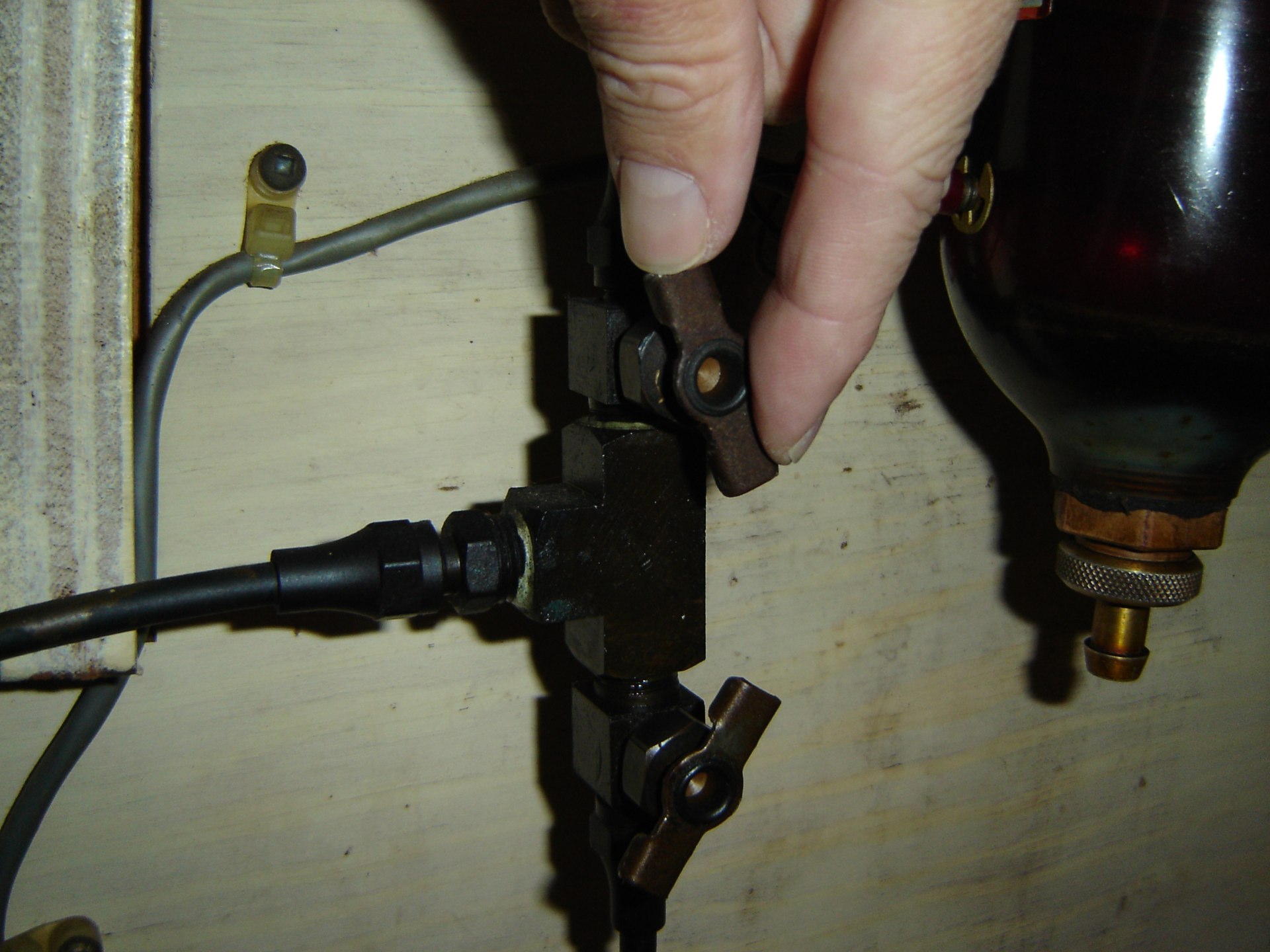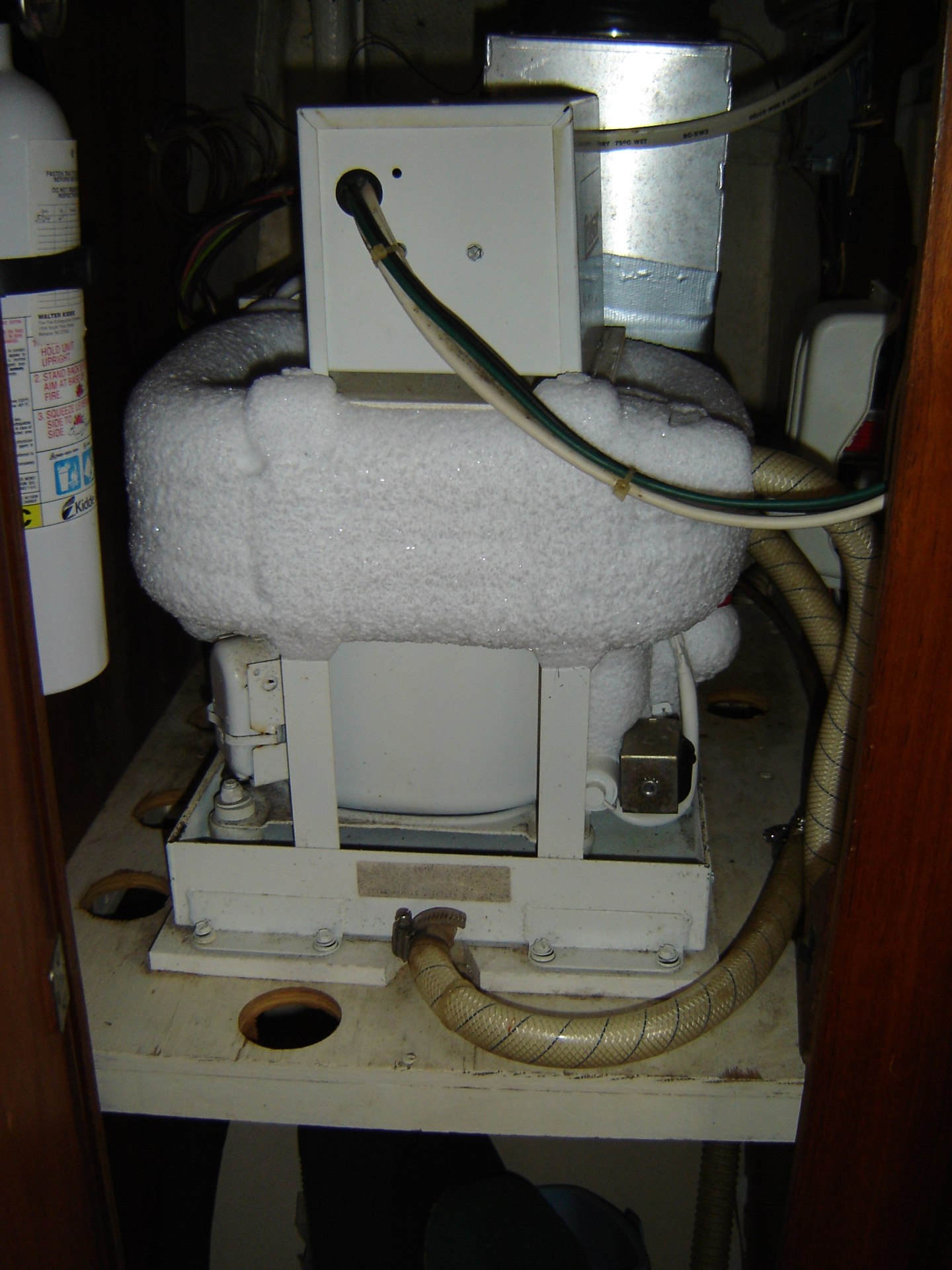Okay, it doesn't look like much, bit it's epic. It's a Parker|Racor 75/500 max fuel filter system. It replaces the old pair of Racor 200's and their leaky bronze tubing and their fiddly little stopcocks that had to be carefully opened and closed.
The old filter system had worked, reasonably reliably, for 30-odd years. Until, of course, I fiddled with it. It was either Hubris or a Shakedown Cruise. Either way, the damn thing broke.
If only... If only I had never touched the little stopcocks. If only I had never used the alternate fuel filter. If only... It probably could have been used for another few years. But, no, I had to go and run fuel through the secondary. Using the valves means that I (eventually) cracked the ancient fittings so that the pump wouldn't prime and the engine wouldn't run. Silly me.
The Heater Issue
A few weekends back we ran the heat pump and were quite happy with the results: warm and comfy. But that was before the creek got too cold to support heat pump operation. This weekend, it looked like this: frosted solid.
The next picture is the proper view. Not caked with frost.
Back when the overnight low was a crisp 50°F, the wood stove was pleasant. It heated the cabin to 60°F, making it bearable. It was one of my Two Favorite Appliances.
When the overnight temp fell to 25°F, the wood stove was reduced to a decoration and the heatpump a block of ice. I've been close to frostbite before. In the morning, I decided that we needed far more heat than the little wood stove.
Next weekend. 10,000 BTU kerosene heater. Oh yeah.
Ritual Boiling of the Thermostats
A time-honored diagnostic procedure for your engine block thermostat is boiling it. It's supposed to open at 180°F (82°C).
But—for those of us who've never done this before, what does it look like? The answer is, it doesn't look like much.
Here's the setup: stove, pan, water and digital multi-meter with really accurate digital thermometer. I feel like a real scientist.
Yes, that's a soup can inside the pot. The idea of boiling engine parts in the good kitchen pot was not a pleasant prospect to The Commodore.
You heat the water up, and watch the thermostat. It slowly starts to crank open around 80-85°C. Slowly. And you take it out of the water and it slowly closes again.
Okay. We have that experimental result. All the spare thermostats work. Which raises the question, "why three spare thermostats?" More importantly, it also leads me to conclude that the thermostat in the engine probably works, also.
I rebuilt the raw-water pump just before Commencement.
Which leads me to conclude that the overheating is likely scale build-up in the heat exchanger. Since we're not going anywhere for the next two months, that's something to dig into. If we can get the cabin warm enough.






